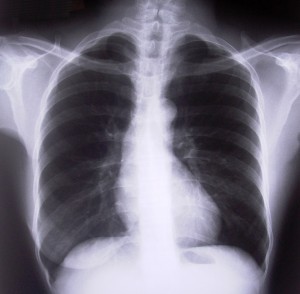 Given the poor response of lung cancer to available therapy and its aggressive biological nature, a series of targets and new therapeutic strategies for their treatment are currently being investigated.
Given the poor response of lung cancer to available therapy and its aggressive biological nature, a series of targets and new therapeutic strategies for their treatment are currently being investigated.
Recently, Ramer et al. investigated the effect of CBD on the invasive properties of A549 cells, a line of human lung carcinoma cells expressing both CB1 and CB2, as well as TRPV1 receptors. Using Matrigel invasion assays, they found a CBD-driven impaired invasion of A549 cells that was reversed by CB1 and CB2 receptors as well as TRPV1 antagonists.
CBD treatment concomitantly upregulated the tissue inhibitor of matrix metalloproteinases-1 (TIMP-1) and the CBD-elicited decrease in tumour cell invasiveness was reversed by knocking down TIMP-1 expression through a siRNA approach. These results suggest a causal link between TIMP-1 upregulation and CBD anti-invasive action. CBD was also shown to induce p38 and ERK phosphorylation as upstream mechanisms for TIMP-1 induction and subsequent decreased invasiveness. Interestingly all these cellular events were blocked by cannabinoids or TRPV1 receptor antagonists.
Together, the following findings provide a novel mechanism underlying the anti-invasive action of CBD on human lung cancer cells and imply its use as a therapeutic option for the treatment of highly invasive cancers.
Recent Research on Lung Cancer and Cannabidiol (CBD)
- Cannabidiol Against Lung Cancer Cells
A recent study published by the National Institutes of Health has found that cannabinoids can increase a cancer cell’s susceptibility to cytolysis, which occurs when a cell bursts due to an imbalance. This data suggest that the cannabinoid-induced ICAM-1 boost on lung cancer cells is responsible for the increased susceptibility of these cells to destruction by LAK cells. This represents an antitumor mechanism of cannabinoids.
-
Cannabinoids Inhibit Angiogenic Capacities Of Endothelial Cells
In this study, the impact of cannabinoids on potential tumor-to-endothelial cell communication conferring anti-angiogenesis was studied. This data suggests a pivotal role of the anti-angiogenic factor TIMP-1 in intercellular tumor-endothelial cell communication resulting in anti-angiogenic features of endothelial cells.
-
Cannabidiol Inhibits Lung Cancer Cell Invasion And Metastasis Via Intercellular Adhesion Molecule-1
This study investigates the role of intercellular adhesion molecule-1 (ICAM-1) within this action. Overall, this data indicates that cannabinoids induce ICAM-1, thereby conferring TIMP-1 induction and subsequent decreased cancer cell invasiveness.
- Cannabinoid Receptors, CB1 And CB2, As Novel Targets For Inhibition Of Non–Small Cell Lung Cancer Growth And Metastasis
Non–small cell lung cancer (NSCLC) is the leading cause of cancer deaths worldwide; however, only limited therapeutic treatments are available. This study investigated the role of cannabinoid receptors, CB1 and CB2, as novel therapeutic targets against NSCLC. Results suggest that CB1 and CB2 could be used as novel therapeutic targets against NSCLC.
- COX-2 and PPAR-γ Confer Cannabidiol-Induced Apoptosis of Human Lung Cancer Cells
This study investigates the role of COX-2 and PPAR-γ in cannabidiol’s proapoptotic and tumor-regressive action. This data shows a novel proapoptotic mechanism of cannabidiol involving initial upregulation of COX-2 and PPAR-γ and a subsequent nuclear translocation of PPAR-γ by COX-2–dependent PGs.
Information on Lung Cancer
Lung cancer is a type of cancer that begins in the lungs. Your lungs are two spongy organs in your chest that take in oxygen when you inhale and release carbon dioxide when you exhale.
Lung cancer is the leading cause of cancer deaths in the United States, among both men and women. Lung cancer claims more lives each year than do colon, prostate, ovarian and breast cancers combined.
People who smoke have the greatest risk of lung cancer. The risk of lung cancer increases with the length of time and number of cigarettes you’ve smoked. If you quit smoking, even after smoking for many years, you can significantly reduce your chances of developing lung cancer.
⇒ Causes
Smoking causes the majority of lung cancers — both in smokers and in people exposed to secondhand smoke. But lung cancer also occurs in people who never smoked and in those who never had prolonged exposure to secondhand smoke. In these cases, there may be no clear cause of lung cancer.
Doctors believe smoking causes lung cancer by damaging the cells that line the lungs. When you inhale cigarette smoke, which is full of cancer-causing substances (carcinogens), changes in the lung tissue begin almost immediately.
At first your body may be able to repair this damage. But with each repeated exposure, normal cells that line your lungs are increasingly damaged. Over time, the damage causes cells to act abnormally and eventually cancer may develop.

Thank you for teaching people about the many great benefits of hemp and hemp oil with cannabidiol. CBD Hemp Oil has made my life better. Keep sharing good information.